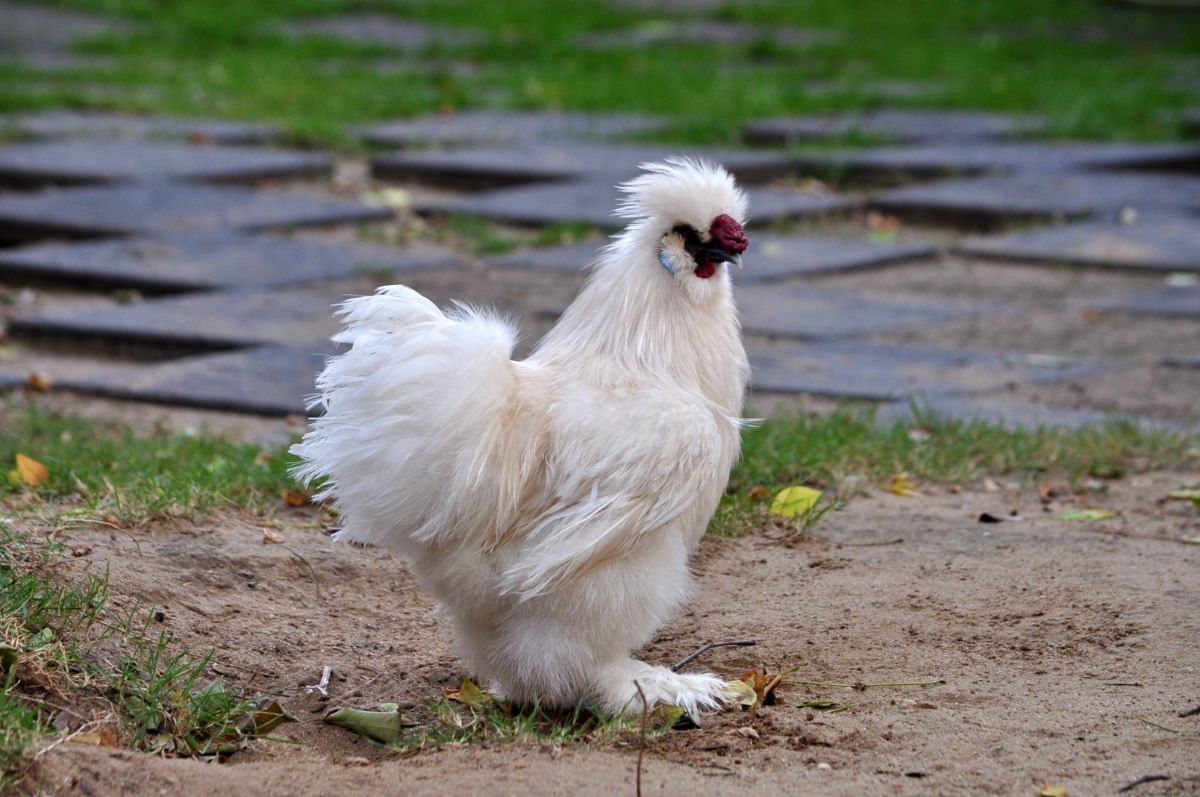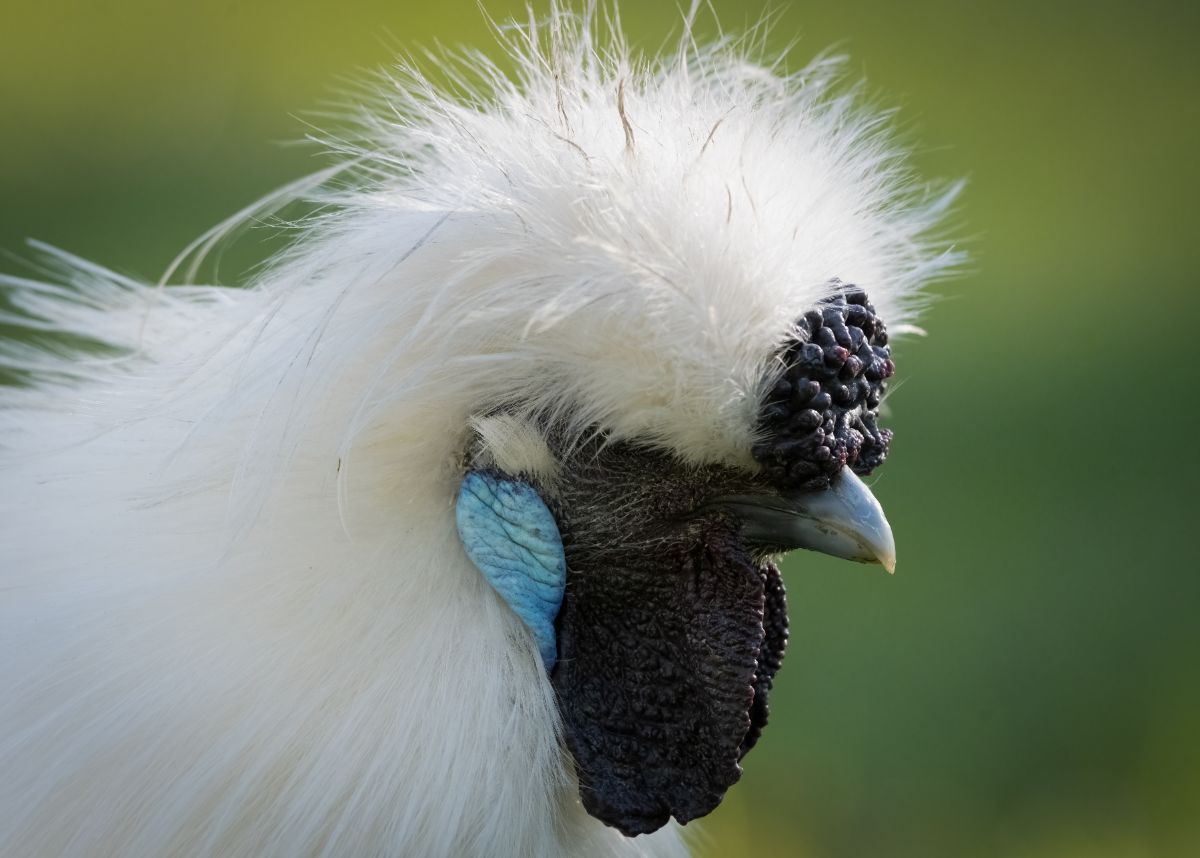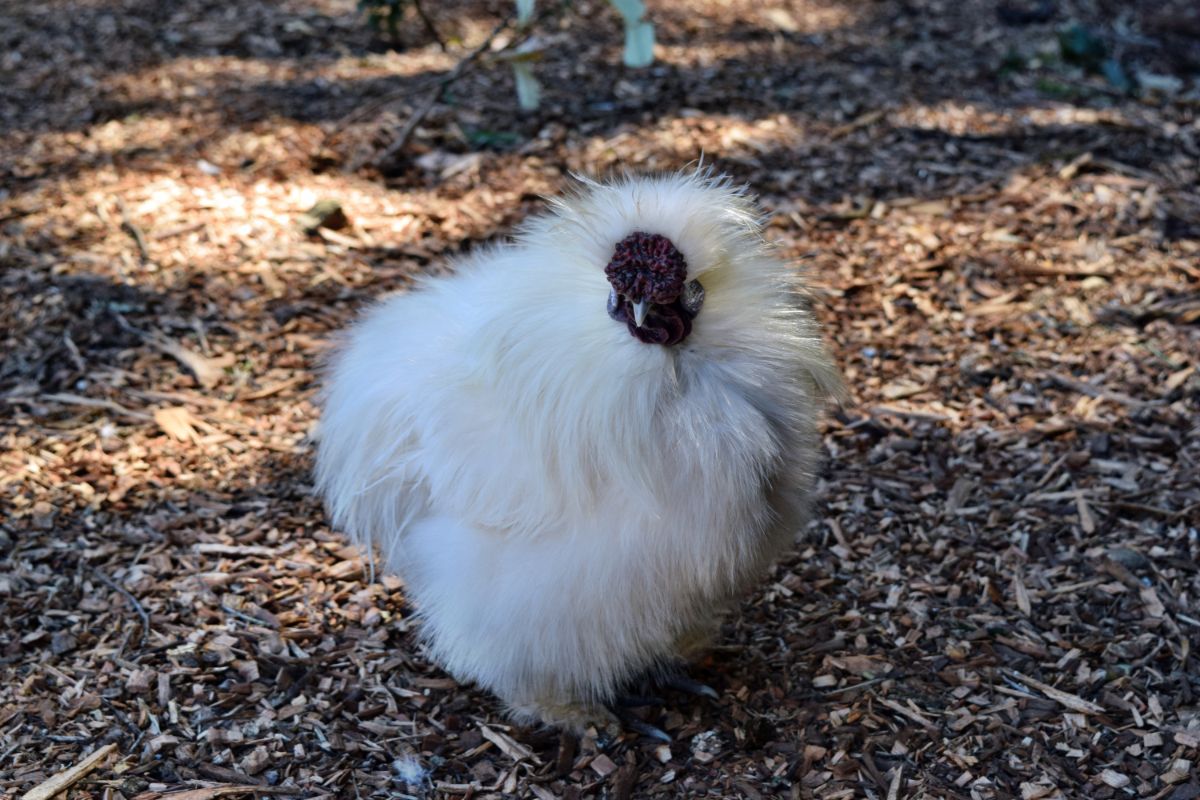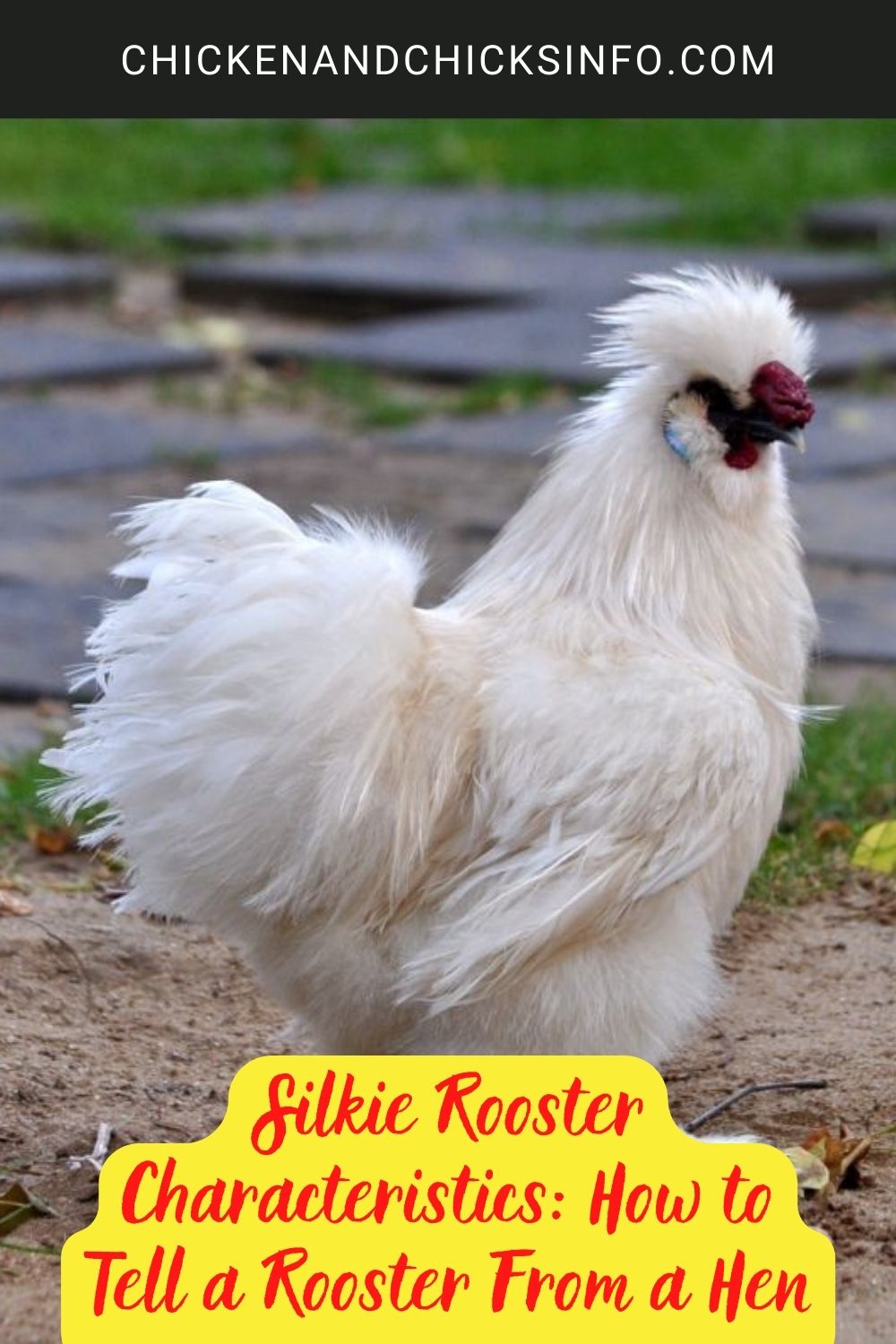
There’s no doubting Silkie chickens are very different from all other chicken breeds. In fact, you’re forgiven if the first time you see a Silkie you don’t even think it’s a chicken.
In this article, I’m looking at some of the distinctive Silkie rooster characteristics that make these fluffy chickens one of the miracles of the poultry world:
Jump to:
Silkie Rooster Characteristics
Feathers/Plumage
A Silkie roosters’ plumage is not only unique looking for a chicken, but it’s also different from a silkie hen and one of the ways you can tell a mature male from a female.
In addition to the fuzzy feathers that make them so unique, the roosters also have long, pointy saddle and hackle feathers. Much like other roosters, but it’s a little harder to tell with all the fluffy plumage.
Combs
Silkie roosters have very unique and interesting looking combs. They are called “walnut” combs because they look a lot like a walnut. They’re not always red in color either, a lot are black.
The females’ combs tend to be more of a “V” shape. While males have a more rounded or “U” shape comb. They also develop their combs earlier than pullets.
Related - Do Silkie hens have combs and wattles?
Wattles

Cockerels also develop their wattles sooner than females. They vary in size and appearance, but generally speaking, they’ll be longer than females.
This is another way you can start to get a good idea of the sex of a silkie around 8-12 weeks of age.
Behavior
Comparing males and females in the same brood, the male’s will display different behavioral signs early on.
They are bossier than females, their posture is more upright, and they are generally more active. As they grow up they can become aggressive and territorial, but they’re not among the most aggressive breeds.
Crowing
Roosters crow, that’s what roosters do. Silkie roosters are no different, and although every bird is different, I have to say they are quite loud.
In my experience, Silkie roosters tend to crow less though. When brought up in a friendly and busy environment, they aren’t as nervous or quick to crow at anything that moves.
Personality
Silkies are known for being docile and friendly. It’s one of the best things about them, and generally speaking, the roosters are more docile and calm tempered than a lot of other breeds.
This doesn’t mean you won’t end up with a tyrant on your hands though. Personalities vary a lot from rooster to rooster. But they’re a good breed to start with if you have children and want a passive roo.
Size

Silkies are one of the smallest breeds of chicken. The roosters typically weigh in at just 3 lbs when fully grown. Despite some having a much larger appearance with all those fluffy feathers, there isn’t a lot underneath.
Then there are the bantams, which are miniature versions, they weigh around 2-2.2 lbs. Tiny, but super cute!
Related - How to tell male and female Silkies apart.
Five Toes
Another of the physical characteristics that separate Silkies from other breeds is that they have five toes.
Most chickens have four toes. It’s not something most backyard flock owners notice unless it’s pointed out. But they definitely do, just count them if you have a Silkie or the next time you look at a picture.
Crest Feathers
Both males and females have a crest or a crown of feathers on the top of their heads. Roosters, however, start to grow longer, single feathers that stick up higher than the females.
Females have tidy, round crests. Oven shaped and groomed with show birds, and is one of the most distinctive features of this breed.
If you want to see what I've been talking about for yourself, check out this video:
Should You Add a Silkie Rooster to Your Flock?
As you can tell from the behavioral and physical characteristics of a Silkie roo, they are one of the smaller and more docile breeds.
This is fine when they’re within a flock of other Silkies or similarly sized and tempered chickens. If you have a flock with larger more aggressive breeds, however, a Silkie might get picked on.
They’re better for kids and busy households than larger breeds though. Especially if you’re keeping females too. The females are cuddly, lovely, and very social.
Something important that I have to point out - be prepared to wash and dry them if your yard gets wet and muddy!
It’s not easy to clean them either. You’re better off keeping them in their coop if it’s wet out, which can obviously become a problem in the long-term as they love to forage and scratch around as much as any chicken.





